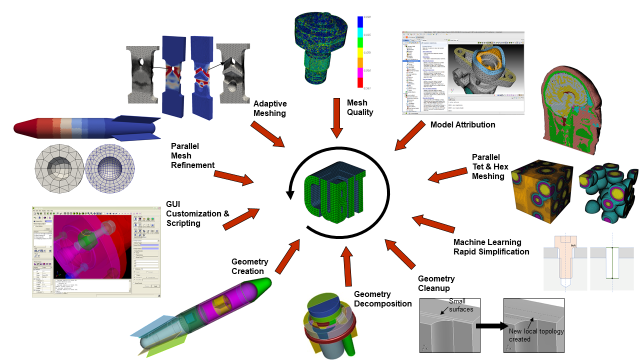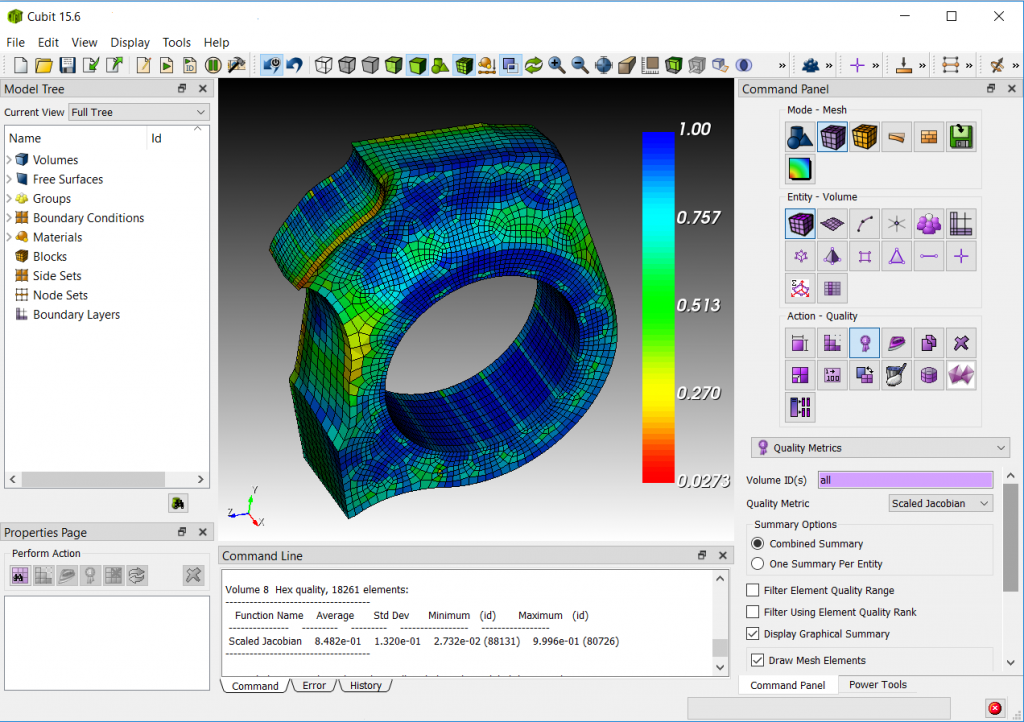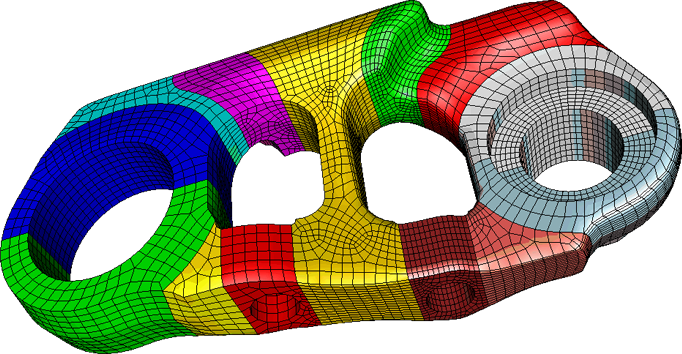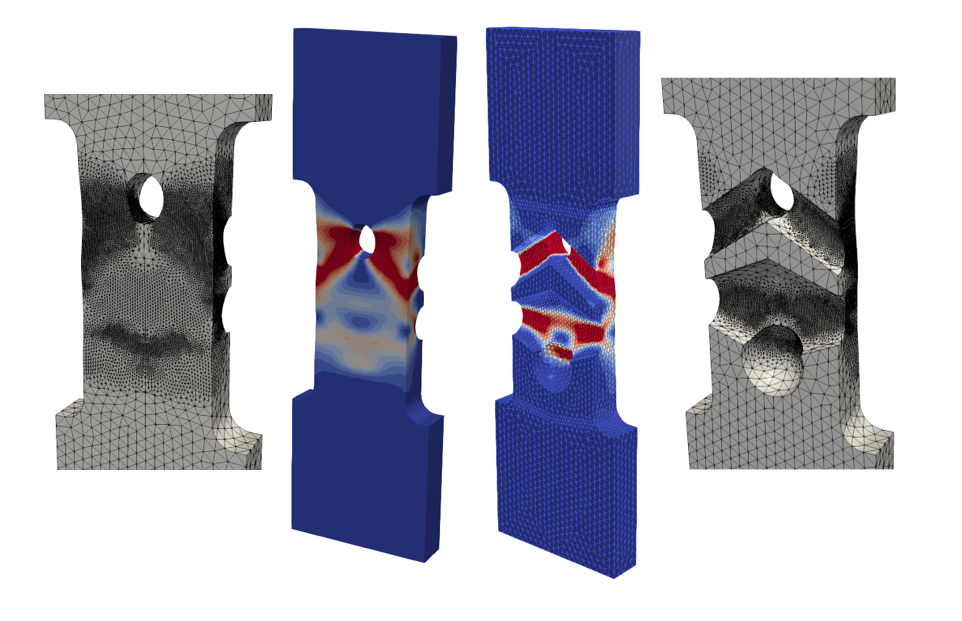Cubit® is a full-featured software toolkit for robust generation of two-dimensional and three-dimensional finite element meshes (grids) and geometry preparation. Its main goal is to reduce the time required to generate meshes, particularly large hex meshes of complicated, interlocking assemblies.
News of Note
- Cubit® 16.16 Released March 26, 2024
- Cubit® 16.14 Released October 6, 2023
- Cubit® 16.12 Released June 2, 2023
- Cubit® 16.10 Released February 21, 2023
- Cubit® 16.08 Released October 5, 2022
Workflow for Rapid Geometry Preparation and Automated Meshing
Cubit® is a solid-modeler-based preprocessor with the ability to import CAD files in neutral formats, clean up and prepare geometry for meshing, generate surface and volume finite element meshes, perform post-meshing operations such as refinement and smoothing, improve mesh quality, perform model attribution, and export mesh for analysis. Cubit® also contains advanced machine learning capabilities to enable rapid design-to-simulation workflows.


Machine Learning for Rapid Part Classification and Simplification
Cubit® uses machine learning to classify parts and suggest defeaturing tools. In the geometry power tool, machine learning can predict poor tet-mesh quality and classify parts. For bolts and springs, the reduce commands can rapidly simplify these parts for analysis. Machine learning also gives suggested solutions for poor tet-mesh quality.

Robust, High-Quality Tet and Hex Meshing of CAD Assemblies
Cubit® supplies a comprehensive set of features for surface and solid meshing. It provides a wide variety of element types and methods for automating and streamlining mesh generation. Cubit® also delivers an extensive suite of tools for geometry decomposition and mesh generation.

Geometry- and Physics-based Adaptive Meshing
Cubit® has the capability to automatically generate geometry-adaptive tetrahedral (tet) meshes based on geometric characteristics such as small curves, high curvature regions, thin walls, etc. It also provides a mesh sizing framework for building mesh sizing functions based on sizing sources. The mesh sizing framework also has the ability to build mesh sizing functions based on physics-based analysis results imported via Exodus meshes. The mesh sizing function can be built using either nodal or element variables.

Large-scale Parallel Meshing on HPC
Cubit® provides parallel meshing algorithms for both tet and hex meshing. Sculpt is a MPI-based parallel all-hex meshing algorithm with various advanced options for defeaturing, adaptive meshing, and respecting multiple materials. Cubit® also provides a lightweight parallel tool for Uniform Mesh Refinement (UMR), which has the ability to generate billions of elements in minutes.
Accelerated Geometry & Meshing Workflows via Python Scripting
Cubit® implements a Python scripting capability that allows users to run the commands with or without the GUI. Python-Cubit enhancement scripts are now distributed with Cubit® for powerful ID-less geometry and meshing operations. These Python scripts are a collection of functions to enhance geometry selection, geometry manipulation, meshing, mesh smoothing, and other Cubit® operations.
These scripts are located in the cubit bin directory or can be downloaded from https://cee-gitlab.sandia.gov/meshing-users/cubit-python-enhancements (Sandia users only). These functions have been added to nightly tests to assure compatibility with the latest Cubit® code.
Cubit® Licensing
Cubit® is used free of cost in a wide range of applications for US government purposes by many government agencies, contractors, and subcontractors. Currently, there are about 2,000 Cubit® users at more than 165 sites across the US. See Cubit® Licensing for information on obtaining the Government Use Notice (GUN) licenses. Licensed users may download the current release from this website.